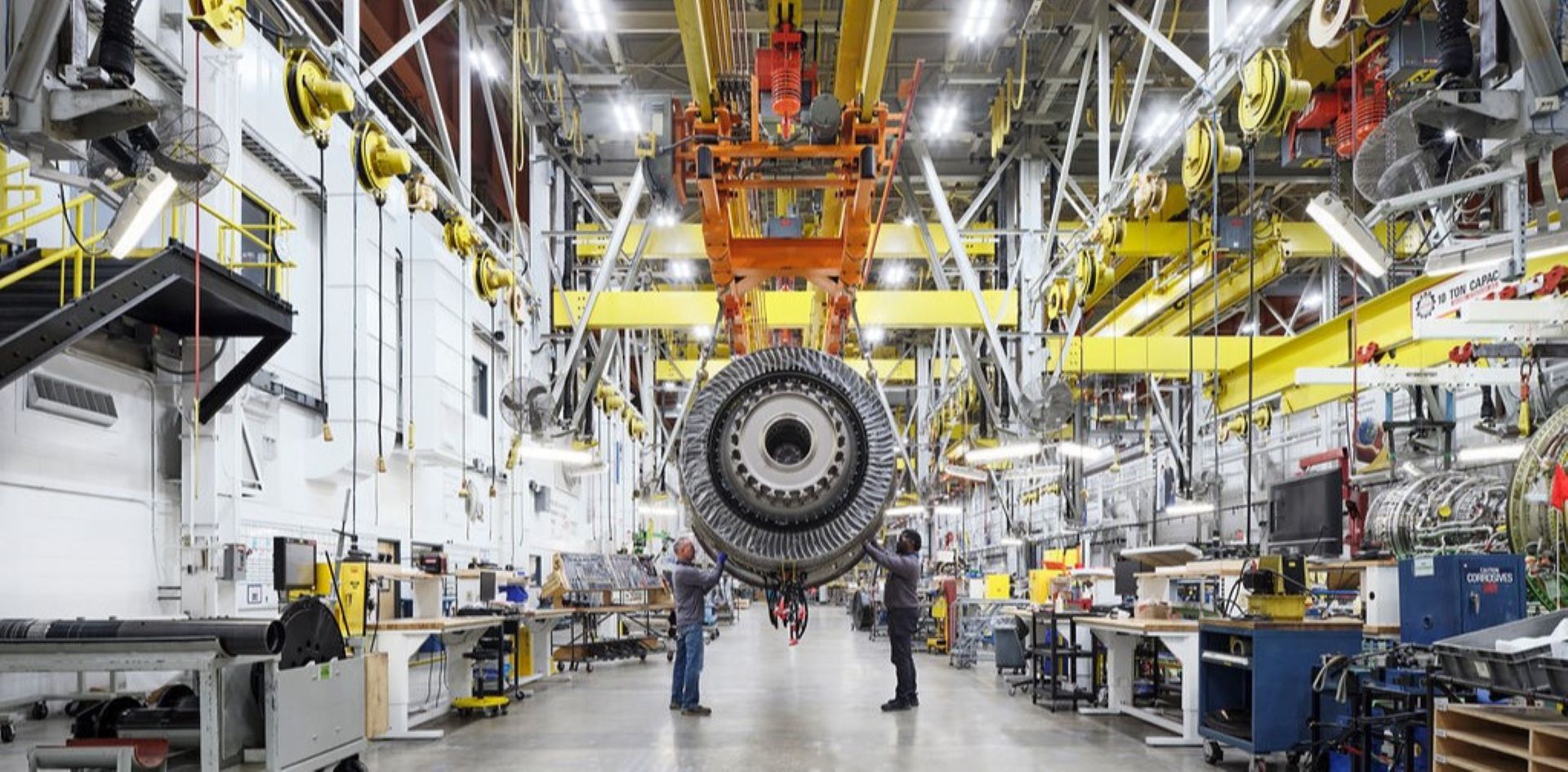How It All Comes Together: $7.6 Million Investment Helping Durham Increase Production and Maintain Quality
March 12, 2024 | by Christine Gibson
It’s a scene you might see at any company: A group sits around a table, debating how to spend its resources. Building renovations? New computers? More equipment?
This isn’t your average boardroom, however. It’s GE Aerospace’s engine assembly plant in Durham, North Carolina. And the meeting attendees aren’t executives; they’re the process owners and experts — highly skilled and self-directed technicians. Durham is one of the first GE Aerospace facilities to use a leadership approach called “teaming,” in which the teammates doing the work help run the plant. Representatives from each team work together to set production schedules to achieve targets, design manufacturing processes, and — as on this day — draw up how they would spend investment dollars coming their way.
“The magic of Durham is that our teammates work together every day to make business decisions,” says Kristen Neubauer, the plant leader. “Our technicians are the experts; they build the engines every day. They know the pain points, the opportunities, and the improvements needed. They know what it takes to make our processes better, and they’re empowered to drive business improvement.”
The results are improved safety and quality, and better delivery at lower cost.
Improving Safety and Quality as Team Meets Greater Demand
To help meet customers’ needs as demand continues, GE Aerospace is investing $650 million in its manufacturing sites and supply chain this year. Nearly $550 million will pay for equipment upgrades and safety enhancements at the company’s facilities and third-party supplier partners in the U.S.
GE Aerospace allocated $7.6 million to the Durham plant. It’s part of a $46 million investment the company is making in its sites all across North Carolina.
“We’re so proud that GE Aerospace invests in a place like this, where we’re working together to get better every day,” Neubauer says.
Freeing Space for Growth
To keep up with demand while prioritizing safety and quality, the technicians at Durham decided together how best to spend the investment funds. As home to so many production lines, the plant was contending with space and hardware constraints even before the ramp-up.
Durham has purchased new equipment and tools throughout the plant — some to replace older equipment and others to make tasks more ergonomic. “We’re investing to get our teammates the tools they need to make our processes better every day. It’s a home run,” Neubauer says.
The GEnx team has been sharing square footage and equipment with CF34 for several years. To make room for growth, the team has earmarked a chunk of the funding to buy two new Westmont gantry systems. These gigantic crane systems suspend engines several feet off the ground, allowing technicians to affix components more ergonomically and efficiently. Thanks to GE Aerospace’s investment, these additional gantry systems will help improve speed, capacity, and flow.
“Our teams are perpetually trying to free up floor space so we can be ready for new products,” says Mitchell Maynard, maintenance and facilities leader at the Durham plant.

The 500,000-square-foot plant runs 14 different product lines — the GE9x and GE90, as well as GEnx, CF6, CF34, CFM LEAP*, and CFM56* models — including all but three of GE Aerospace’s commercial engines. Durham is scheduled to ship 37% more engines in 2024 than it did last year; 2025 orders are up another 13%.
As production volume swells, the Durham team is keeping safety first. They’ve devoted budget line items to revamping the 50-year-old water system, installing brand-new sprinklers, and clearing space for pedestrian aisles to keep teammates and fork trucks in separate lanes. “Our strong safety culture is our top priority and biggest focus,” Neubauer says.
Redesigning the Factory Workforce
The Durham site was originally constructed in 1972 for GE’s industrial power division; from 1973 to 1985, it manufactured steam turbines. After sitting vacant for five years, the property was tapped to introduce the GE90. Given how innovative the engine was, and because the facility was being restaffed from the ground up, it was an opportunity to try something new — to build an empowered, self-directed workforce with a minimum of bureaucracy. When the plant reopened in 1993, the vision began with 20 highly skilled technicians on self-managing teams.

Today the facility employs nearly 400 people. The now 18 high-performance teams work together to build engines. From the moment the crates of components arrive until the completed product is placed on an outbound truck, team members handle all the details: determining who builds what and when, tracking supplies, and constantly striving to make the whole operation more efficient.
The employees all report directly to Neubauer, meaning there are no layers; it is a completely flat organization. “I’m the plant leader, but I’m the least important person in the organization,” she says. “I’m here to support the technicians doing the work. That’s how this place was built. It’s the culture that we’ve maintained and grown for the past 31 years, and it’s what makes Durham great.”
“Everyone has a voice,” Neubauer says. “Everyone on the team is empowered. It makes us more competitive. We’re thrilled that GE Aerospace sees that and invests in us.”
*CFM56 and CFM LEAP are products of CFM International, a 50-50 joint company between GE Aerospace and Safran Aircraft Engines.





